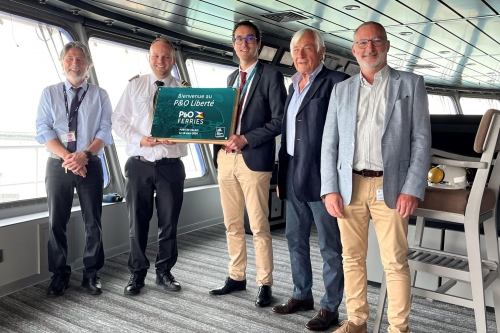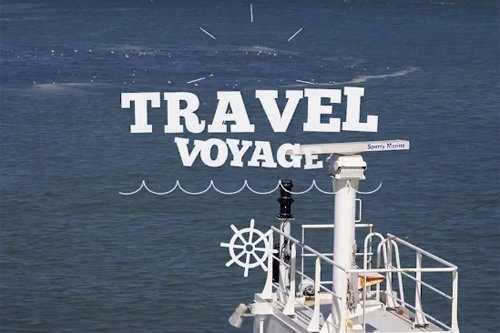2017, a year of recovery for the Port Boulogne Calais
18 january 2018
2017 was synonymous with recovery for the Port Boulogne Calais. On the Cross-Channel sector, heavy goods vehicle traffic continued the growth it started in 2016, but passenger traffic was not up to expectations. As for the fishing port of Boulogne-sur-Mer, it has retained its first place in the ranking of French fish auction centres in terms of volume.
Truck traffic on the rise with nearly two million vehicles transported
Although lower than forecast, heavy goods vehicle traffic continued the growth that began in the last quarter of 2016, marked by the dismantling of the La Lande camp. With 1,990,082 vehicles transported, heavy goods vehicle traffic increased by 4.25% in 2017. While this figure represents a historic record for the Port of Boulogne Calais, the market share of the heavy goods vehicle business has not yet returned to its pre-crisis level with 47% in 2017 against nearly 50% before 2015 .
A difficult yet encouraging year for passenger traffic
Cross-Channel passenger traffic was not up to expectations in 2017, and dropped 1.7% compared with 2016 figures, passing for the first time under the nine million mark with 8,990,798 passengers. However, even though traffic continued to fall in 2017, the second half of the year saw some encouraging signs of recovery that should be confirmed.
As for passenger vehicles, there was a significant decline, as in the last two years, in coach traffic. Traffic decreased by 9% with 73,121 vehicles, de facto impacting the number of passengers carried. At the same time, the number of cars and caravans is increasing, which indicates renewed confidence among UK citizens about passing through the port of Calais. Overall passenger car traffic increased by 3.2% to stand at 1,506,681 units.
The general cargo terminals continued the growth which began in 2016
The activity of the general cargo terminals continued to make progress both in Calais and Boulogne-sur-Mer. A total of 1,995,715 tonnes were handled in 2017, which represents an increase of 8.38% compared with 2016.
1,334,060 tonnes (+8.9%) passed through the Calais general cargo terminal. The traffic mainly concerned construction materials, petroleum products, sugar – the traffic in which has almost doubled after the elimination of quotas – and submarine cables.
In Boulogne-sur-Mer, the annual tonnage amounted to 661,655 tonnes (+7.3%) in 2017, thanks in particular to the traffic in building materials and livestock feed products. The good growth (+30,000 tonnes) of limestone traffic exported to the countries of northern Europe is worth highlighting. Finally, note that the experiment conducted in 2017 with quicklime traffic was conclusive. The development of this new sector should result in significant new volumes of traffic in 2018.
"Unaccompanied trailers" traffic confirmed its build-up.
"Unaccompanied" trailer traffic (i.e. with no driver) is continuing to grow, supported in part by the restart, last February, of the VIIA Britanica rail motorway linking Calais to Le Boulou (Pyrenées Orientales).
For 2017, unaccompanied traffic grew by 9.8%. 41,339 units were handled at the port of Calais.
The rail operator, VIIA, has planned to increase the frequency of its trains and the development of sites with rail access to Calais by the end of January 2018. The build-up in unaccompanied trailer traffic confirms the soundness of the decision taken by the Port Boulogne Calais to develop and invest in multimodal transport solutions.
The fish auction centre in Boulogne-sur-Mer keeps its place as 1st French fishing port in volume and 2nd in value
The port of Boulogne-sur-Mer in 2017 remained the largest French fishing port with 32,028 tonnes landed, which represents a 4.8% decrease compared with 2016.
On the other hand, the average selling price per kilo rose sharply to reach 2.53 euros against 2.31 euros in 2016 (i.e. +9.5%). The increase was largely due to the higher volumes landed of high value species such as squid and scallops.
As a result, the value of landed fish increased by 4.2% to stand at €81.1m in 2017, allowing the port of Boulogne-sur-Mer to maintain its 2nd place in value.
Jean-Marc Puissesseau, Chairman and CEO of Port Boulogne Calais said: "The figures for 2017 are not up to our expectations. 2017 was a mixed year for the Port Boulogne Calais with a relative recovery in heavy goods vehicle traffic, but not in passenger traffic. The management and our employees continue to work every day to improve the quality of the reception of our customers and users on our infrastructures both in Boulogne and Calais.
The expected growth in freight traffic on both sides of the Channel in the coming years proves that the Calais/Dover route, the shortest and most economical, remains a strategic choice for the transport and logistics industry. It is essential for the port of Calais and its hinterland that the fluidity of traffic on the Calais/Dover route be maintained and that the ongoing discussions between Europe and the UK with regard to Brexit take this into account."
Summary of 2017 key figures | |
Total goods: 51,212,933 tonnes
| |
Cross-Channel activity:
| Fishing activity:
|
General cargo sector:
|
|
Press Contact:
Isabelle Fauquet
Tél.: + 33 (0)3 21 46 29 10 / GSM: +33 (0)7 85 54 04 47







